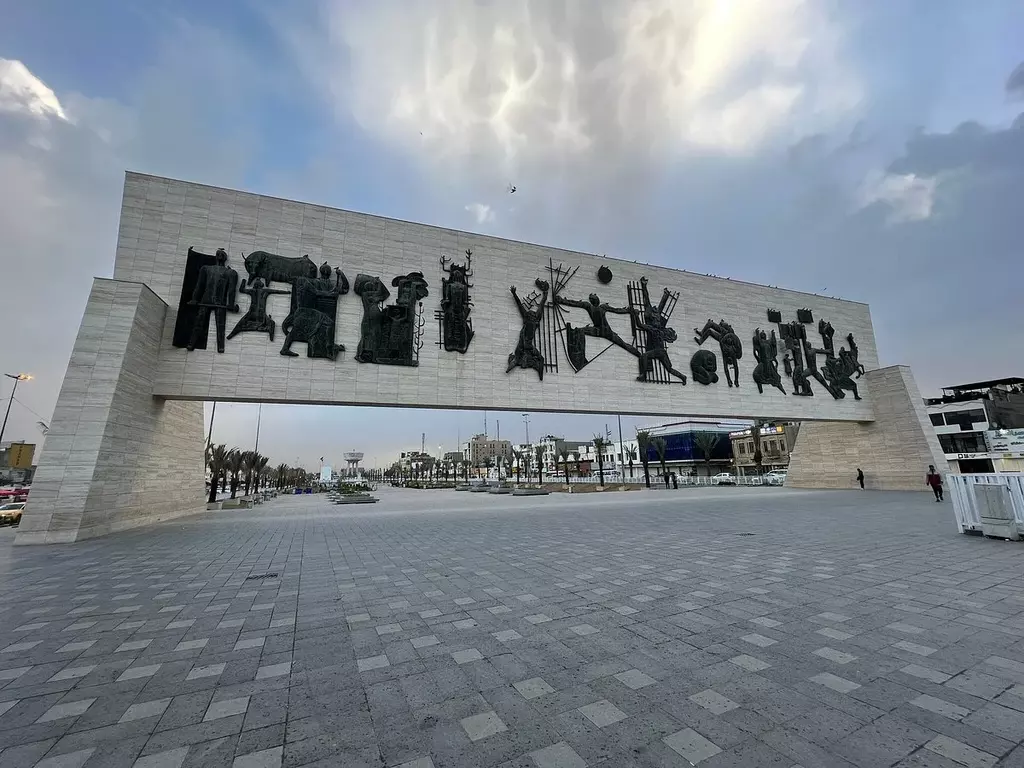Liberation Square

- Liberation SquareSaha al-TahreerBaghdad, Iraqnational celebrations, protests, and pivotal political momentsLiberation Squarefreedomand independence The square is known for its wide open space, with distinctive architectural elements, such as monuments and fountains, which make it a recognizable landmark. It also features a large statue of the late Iraqi leader Saddam Hussein, which was famously toppled during the 2003 Iraq War, marking a pivotal moment in Iraq's history. The fall of the statue was broadcast globally and symbolized the end of Saddam Hussein's regime. Today, Liberation Square remains an important symbol of Iraq's complex political landscape, as it represents the country's journey from authoritarian rule to the ongoing challenges of rebuilding and redefining its identity.
- Throughout the years, Liberation Square has witnessed many demonstrations and protests, particularly during times of political unrest or social change. It became an iconic location for Iraqi citizens to express their desires for reform, freedom, and justice. These events have cemented the square's role as a focal point for activism and collective action in Iraq's history. It is often the site of memorials and commemorative events, where Iraqis come together to reflect on the country’s past struggles and to advocate for a better future.
- Today, Liberation Square stands as a historic landmark and a place of memory for both Iraqis and international visitors. It continues to be an active public space for various events, from national holidays to cultural festivals, and serves as a reminder of Iraq's longstanding aspirations for freedom and self-determination. The square’s legacy is deeply intertwined with the country’s political evolution, embodying both the challenges faced by Iraq and the hope for its future.
